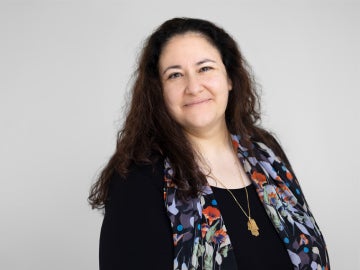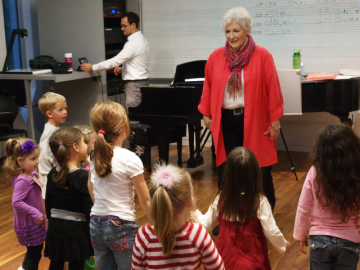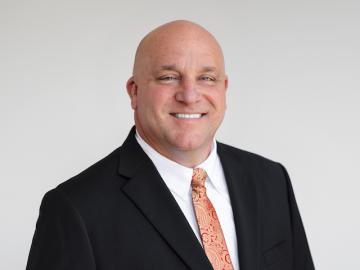Construction of Gateway Center on Target
September 2, 2015
Lisa Gulasy
Construction on the Peter B. Lewis Gateway Center, the renewable-powered mixed-use development that will become the cornerstone of Oberlin’s Green Arts District, is progressing as expected, says Christopher Noble of Smart Hotels, LLC, the company serving as project developer. Just shy of a year into construction, Noble estimates Phase I of the project, which encompasses the hotel, restaurant, and conference center, is about 65 percent complete.
“The building structure is completed, the exterior building enclosure is about 50 percent complete, and the building roof is on,” he says. “On the inside of the building, all of the hotel rooms have been framed, the building’s interior drywall work is about 50 percent complete, and all of the mechanical, electrical, and plumbing work within the hotel rooms is underway.”
The center is anticipated to open early 2016.
Named in honor of the late philanthropist and chairman of Progressive Insurance Company, the Peter B. Lewis Gateway Center is located at the northeast intersection of North Main Street and East College Street. It is designed to meet the U.S. Green Building Council’s (USGBC) LEED platinum rating, the highest possible green building certification level. According to Noble, the center is only the fourth hotel of its kind in the U.S. being built to LEED platinum standards.
“USGBC awards LEED points based on different categories, such as water efficiency and materials and resources,” says Meghan Riesterer, assistant vice president of energy management and sustainability in the Office of Environmental Sustainability. “A building needs a minimum of 80 points to be considered platinum. The latest data show the center will be awarded 86 or 87 points.”
According to Noble, many of these points are being awarded for the hyper-efficient hydronic systems that will power the center. “Water systems are the most efficient for heating and cooling. The amount of energy it takes to transmit one British thermal unit (BTU) of heat energy with air is 10 times greater than with water. That’s a remarkable difference,” he says.
One such system is the geothermal well field, which was installed this summer. A geothermal well field is the component of a building’s mechanical system that exchanges energy with the earth by circulating water through pipes beneath the earth’s surface. Also of note are the center’s radiant ceiling panels. “Radiant panels will be mounted in the ceilings in every one of the guest rooms, as well as in other spaces within the building. In the winter, hot water will circulate through the panels to warm the spaces, and in the summer, cold water will circulate to cool the spaces,” Noble says.
“Radiant panels are a very innovative approach to heating and cooling individual room spaces. It’s an approach that will set this building apart from many others,” Riesterer says.
Materials used in construction of the center are also contributing to the anticipated LEED platinum rating. “LEED for Building Design and Construction provides a framework for building a holistic green building, giving us a chance to discuss and implement every sustainable feature, including everything from efficient energy designs to site selection to local materials used, thus maximizing the benefits,” Riesterer explains.
The center’s architectural firm, Solomon Cordwell Buenz (SCB), reports 50 percent of the wood used in the project is Forest Stewardship Council certified. In addition, much of the hotel room furniture is being crafted by local Amish carpenters, and salvaged wood from an 1830s farmhouse from south of Wellington, Ohio, is intended to be repurposed in the hotel check-in counter, public spaces, and possibly for table tops in the hotel restaurant.
“The majority of the wood is American chestnut, some is black walnut,” Noble says. “By analyzing growth rings of the wood, we can tell the trees were mature when they were milled to build the house. It’s likely they would have been growing before the time of American Revolutionary War.”
“Three generations of people who lived in the farmhouse were Oberlin College graduates,” he adds.
Noble says much of the work left to be done in Phase I of construction involves the center’s interior spaces, particularly in the hotel restaurant. As for the exterior, Noble says progress will be evident. “This fall, the community will see the exterior of the building become complete. The windows will go into the building, the exterior cladding materials will go onto the building, and the building’s outdoor spaces—the outdoor dining plaza, the landscape, and sidewalk areas of the building—will be completed,” he says.
Once Phase I of the project is complete, crews will move on to Phase II, which includes the build-out of the office and ground-floor spaces. The college is currently in talks with various merchants to fill the retail spaces.
The center is expected to have a significant impact on the college and community. It is likely to serve as a meeting space for college and community groups, to attract new business by way of conferences and meetings, and to bolster Oberlin’s reputation for environmental stewardship and help the city achieve its goal of carbon neutrality by 2025.
“The center was built at the intersection of town and gown. It will be, in my opinion, the center-point of the dialogue between campus and community. I think the conference center, which will be the largest within Lorain County, will be host to a series of national events. And I think Oberlin’s profile as being a sustainable place to live and work is going to be raised by the center’s presence,” Noble says.
You may also like…
Remembering Former Visiting Assistant Professor Leila Ben-Nasr
Leila Ben-Nasr, a former visiting assistant professor of comparative American studies, died on November 28, 2025.
Oberlin Community Remembers a Beloved Retired Professor
A member of Oberlin faculty for 13 years, Peggy Bennett was known by students and the Oberlin community for creating and leading MusicPlay, a preschool classroom and learning lab run as part of the...
Eric Rooks Named Director of Campus Safety at Oberlin
Longtime public servant emphasizes collaborative partnerships and kindness.


